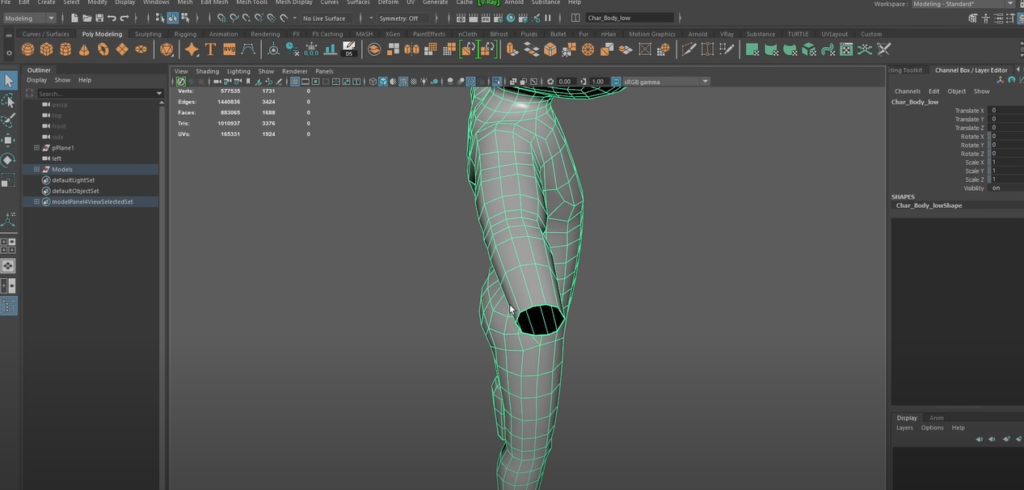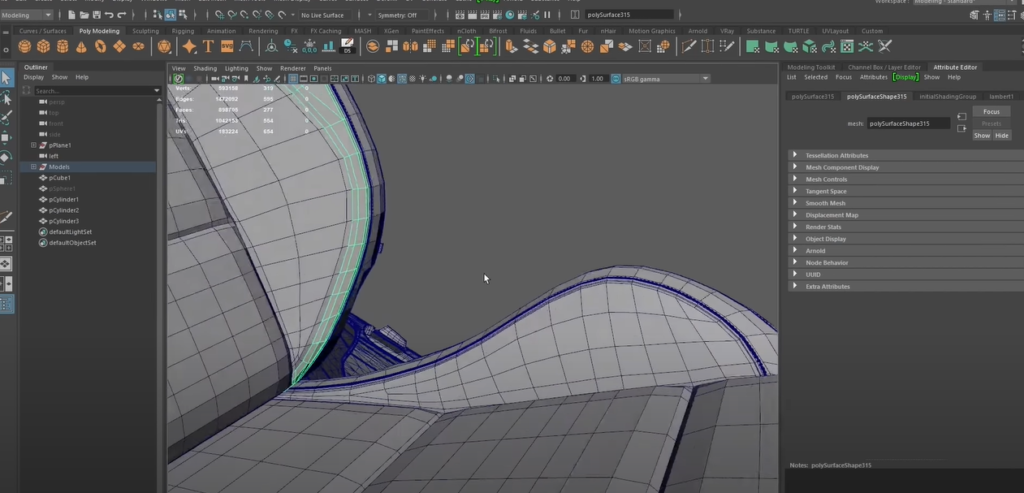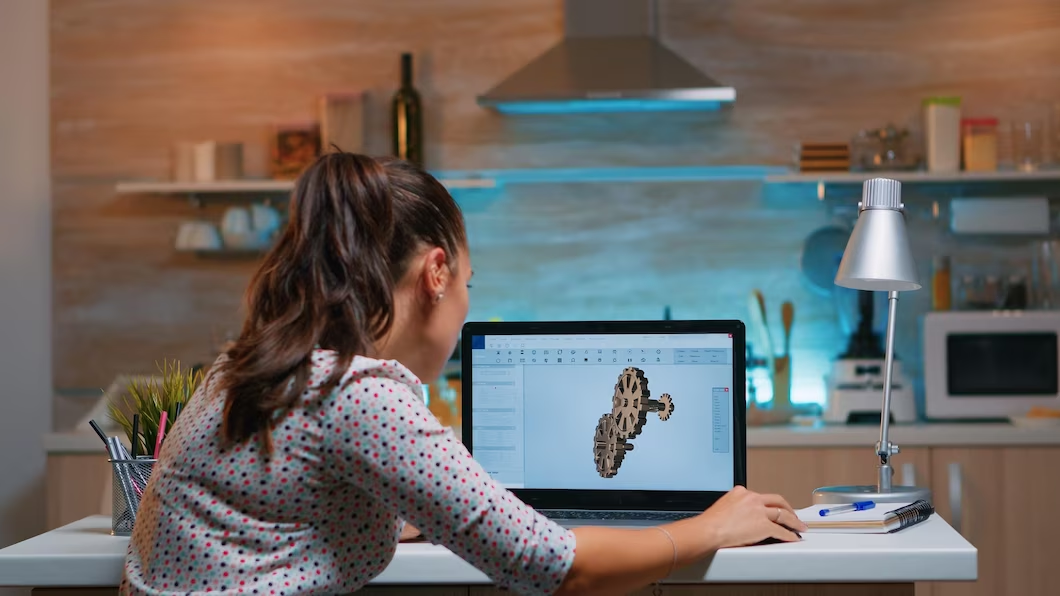In the world of 3D modeling, the term ‘topology’ refers to the layout and organization of polygons that constitute a 3D model. The term itself originates from a branch of mathematics that studies properties preserved through deformations, twists, and stretches. In the context of 3D modeling, it’s all about the arrangement of the model’s basic building blocks – faces, edges, and vertices. Together, they determine the form, detail, and performance of the 3D model.
Significance of Optimal Topology in 3D Modeling
The quality of topology profoundly influences the overall quality of a 3D model. Here are some reasons that highlight its significance:
1. Efficient Rendering
Optimal topology has a direct impact on the efficiency of rendering. This is demonstrated through the following points:
- Reduced Polygon Count: An optimal topology reduces the number of polygons, which in turn, results in a lighter and faster to render model;
| High Polygon Count | Low Polygon Count | |
|---|---|---|
| Rendering Speed | Slower | Faster |
| Model Weight | Heavier | Lighter |
- Uncompromised Details: Despite the reduction in polygon count, the level of detail in the model is not compromised, which ensures a high-quality outcome.
2. Animation-Friendly
Another important aspect of optimal topology is its friendliness to animation. This manifests itself in the following ways:
- Realistic Deformations: With proper topology, the model can undergo realistic deformations. For example, it can effectively mimic the movement of skin over muscles, much like in living organisms;
- Less Rigging Issues: Optimal topology leads to fewer rigging issues, making the animator’s job easier and less prone to mistakes.
3. Clean Texturing
Texturing in 3D models is significantly enhanced by optimal topology. Here’s how:
- Minimizing Texture Distortion: A well-planned topology reduces the chances of ‘texture stretching,’ thus preventing any distortions on the surface of the 3D model;
- Enhanced Texture Quality: It not only avoids distortion but also enhances the overall quality of the textures, ensuring that they appear realistic and clean.
4. Increased Flexibility
The benefits of optimal topology extend to the flexibility of the 3D model as well:
- Flexible Modifications: The model can be conveniently deformed, animated, or modified without losing its shape integrity;
- Preserved Visual Appeal: Despite any alterations made, the model retains its visual appeal, thereby safeguarding the artist’s original vision.
Core Elements of Topology in 3D Modeling

Indeed, mastering the core elements of topology in 3D modeling is crucial for anyone interested in creating sophisticated and accurate models. These components are like the ABCs of 3D modeling. Let’s dive deeper into each of these elements:
1. Faces
Faces form the visible surface of a 3D model, serving as the skin that covers the underlying structure. They are polygonal and come in several types:
- Triangles: These are three-sided faces, the simplest and most fundamental form of polygon. They’re heavily used in gaming due to their computational efficiency;
- Quadrilaterals (quads): Quads are four-sided faces and are the most commonly used type in 3D modeling, especially for models that will be animated. This is due to their versatility and ability to maintain edge flow, providing a smoother and more predictable deformation;
- N-gons: These faces have more than four sides. While they can sometimes be used for parts of the model that won’t be deformed (like hard surfaces), their use is generally discouraged due to unpredictable behavior when the model is deformed or smoothed.
2. Edges
Edges form the skeleton or wireframe of a 3D model. They represent the lines where two faces meet and determine the model’s overall shape. There are several types of edges:
- Boundary edges: These are edges on the border of the model, where only one face is connected;
- Internal edges: These are edges that are surrounded by faces from all sides;
- Crease edges: These are edges that have been intentionally made sharper to define a model’s detail or feature.
3. Vertices
Vertices are the points in 3D space where edges meet. They are the corner points of a face and determine the shape and structure of the model. Vertices can be:
- Pole vertices: These are vertices where more than five edges meet, often leading to a star-like configuration;
- Corner vertices: These are vertices that connect three edges, often forming the corners of a model;
- Joint vertices: These vertices connect four edges and are often found in the middle of a model, serving as structural points.
4. Poles
Poles are special types of vertices where either more than five or less than four edges meet. They can have a significant impact on the smoothness and deformation of the model. Proper placement and handling of poles can help create a cleaner mesh topology and improve animation deformation.
5. Edge Loops
Edge loops are chains of edges that loop around a model’s surface, following the model’s topological structure. They play a critical role in defining the model’s form and deformation behavior, and their correct implementation is particularly crucial in organic modeling where smooth and predictable deformation is necessary.
Detailed Guide to Implementing Effective Topology

The practice of topology optimization can elevate the quality of 3D models exponentially. Here’s a step-by-step guide to achieving effective topology:
| Step | Description |
|---|---|
| Study the Object | Familiarize yourself with the object you’re modeling. Understand its form and function, which will guide the layout of your topology. |
| Block Out the Basic Shape | Create a simplified version of your model using basic geometric shapes. This practice, known as ‘blocking out,’ helps you establish the object’s proportions before adding details. |
| Add More Detail | Gradually increase the level of detail by adding more polygons to your model. Remember to do this slowly and intentionally, as it’s easier to manage changes and corrections with fewer polygons. |
| Follow the Form | Ensure that your edge loops follow the form of your model. For example, if you’re modeling a human face, mimic the natural muscle structure around the mouth for a more realistic result. |
| Focus on Deformation Zones | Pay extra attention to areas that will deform, like joints in a character model. Maintain a clean topology with sufficient edge loops for smoother deformations. |
| Retopologize if Necessary | If your model’s topology becomes too complicated or messy, consider retopologizing. This involves creating a new mesh that better follows the shape and structure of your model. |
Practical Tips and Tricks
Here are some practical strategies and best practices to employ when working with 3D modeling topology:
- Avoid triangles and n-gons in areas that will deform. They can cause unpredictable results when animating or smoothing your model;
- Aim for evenly spaced polygons. Uneven spacing can result in ‘texture stretching’ or unusual shading effects;
- Place poles strategically. They can be problematic if located in areas of deformation but can be useful for redirecting edge flow when necessary;
- Ensure a good flow of edge loops. They should follow the form of the model and make logical sense. For example, loops around a character’s mouth should resemble the muscle structure for realistic movement;
- Pay attention to the grid pattern. A good grid pattern helps maintain uniformity, leads to predictable deformations, and provides better visual results in general.
| Do’s and Don’ts in Topology |
|---|
| Do keep your polygons evenly spaced |
| Don’t use n-gons in areas that will deform |
| Do place poles strategically and sparingly |
| Don’t neglect the flow of edge loops |
| Do pay attention to the grid pattern |
| Don’t underestimate the importance of good topology |
Conclusion
For a visual understanding and further insights into the principles of 3D modeling topology, please check out this in-depth video:
Mastering topology is a continual learning journey but with diligent practice, you will find yourself creating 3D models with optimal, high-quality topology that serve your creative goals while enhancing efficiency and realism.
FAQ
Edge flow is a term that refers to the way edges are aligned on a 3D model. A good edge flow is crucial for realistic animations and deformations. It should generally follow the ‘natural’ contours or lines of an object or character.
Yes, software like ZBrush, Maya, and Blender offer various tools to aid with the topology process, including features for automatic retopology. However, these tools should not replace a fundamental understanding of topology principles, as manual adjustment is often necessary for optimal results.
In 3D modeling, a ‘pole’ refers to a vertex where more or less than four edges meet. They play a significant role in directing the edge flow in your topology but should be used sparingly as they can lead to visual anomalies.
Learning topology in 3D modeling requires practice and patience. Start with basic shapes, gradually move to complex models, and always analyze the topology of your 3D models. Utilize resources such as online tutorials, forums, and courses to expand your knowledge and skills.
